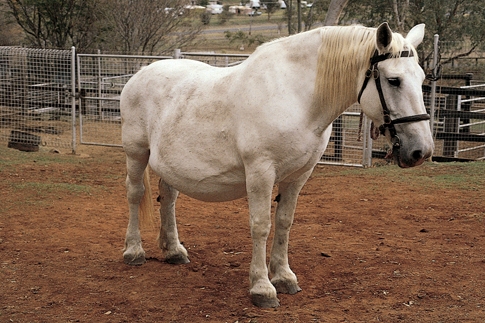Equine Reproduction and Stud Medicine Q&A 13
| This question was provided by Manson Publishing as part of the OVAL Project. See more Equine Reproduction and Stud Medicine questions |
A 19-year-old multiparous pregnant Percheron mare is presented with a rapidly enlarging abdomen with abrupt development of an extensive area of painful oedema on the ventral abdominal wall. She is 325 days from the last service date and has exhibited increasing depression and discomfort during the previous 24 hours. Rectal examination found a presenting foal with head and legs inside the pelvis, the foal moved vigorously when touched, the cervix was slightly dilated. Ultrasound examination of the enlarging abdomen showed the possibility of fluid, most likely blood extravasated into the abdominal tissues. Over the next half hour, the mare’s heart rate increased to 70/minute and respiratory efforts became more laboured with further signs of developing depression.
| Question | Answer | Article | |
| What could be the likely clinical conditions present? | (1) Rupture of the abdominal muscles (oblique and transverse abdominal muscles: a ventral hernia); (2)rupture of the prepubic tendon;(3) ventral hernia with or without involvement of the foal; (4) haematoma – subcutaneous or intramuscular; (5) placental hydrops as a primary cause leading to (1)–(4) above.
|
Link to Article | |
| How would you differentiate these conditions? | This is a difficult diagnostic dilemma. Presence of severe ventral oedema and progressive distortion of the mare’s abdominal shape often makes manual palpation unrewarding. Rupture of the prepubic tendon may easily lead to rupture and haemorrhage of the adjacent musculature. Some mares develop very obvious lordosis and adopt a ‘rocking horse’ position, and together with the reluctance to walk and lie down are strongly indicative for rupture of the prepubic tendon. Use of ultrasound to attempt to ‘visualise’ hernias, muscle injury, presence of blood clot, presence of bowel or fetus. Rectal palpation of ventral or ventrolateral abdominal floor for ventral hernia. All examinations are less than satisfactory due to the foal’s presence and oedema of the body wall.
|
Link to Article | |
| What are some of the predisposing factors? | In many cases, there is no evident predisposing cause; however, predisposing factors are hydrops of the fetal membranes, twins and trauma. This rare condition seems to be more common in older mares and draught horses.
|
Link to Article | |
| What supportive measures would you undertake in the early stages? | (1) Restrict activity to a small yard or large stable; (2) monitor for signs of blood loss, constipation, loss of protein and any development of further discomfort; (3) use of a strong bandage around the abdominal wall and strapped over the back is rarely successful except in mild cases, and these usually manage without support; care must be taken with pressure necrosis along the backline.
|
Link to Article | |
